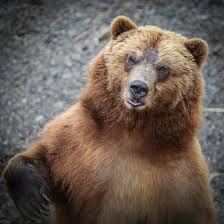Alaska: A Glimpse into the Last Frontier

Introduction
Well-known as the “Last Frontier,” Alaska is the largest and one of the most diverse states in the United States. Its vast wilderness, stunning landscapes, and rich cultural history make it an important place of interest for both nature enthusiasts and tourists alike. Understanding Alaska’s geography, ecology, and its significance in terms of climate and wildlife is crucial, especially as issues like climate change increasingly affect this unique region.
Geographic Wonders
Stretching over 663,300 square miles, Alaska is home to some of the highest peaks in North America, including Denali, standing at 20,310 feet. The state’s natural landscapes range from breathtaking mountains and glaciers to expansive forests and tundra. The coastal regions are rich in marine biodiversity, while the interior contains significant deposits of natural resources such as oil, gas, and minerals, making Alaska essential to the U.S. economy.
Cultural Diversity
Alaska’s population is a rich tapestry of Indigenous cultures, as well as settlers from the continental U.S. and various international communities. Over 229,000 Alaska Natives belong to various groups, including the Inupiat, Yupik, and Tlingit peoples. The cultural heritage includes vibrant traditions, art, and languages that have been preserved over thousands of years.
Climate Change Impact
Alaska is on the front lines of climate change, serving as an indicator of broader environmental shifts. According to the National Oceanic and Atmospheric Administration (NOAA), Alaska has warmed by about 3°F over the past 70 years. This warming affects the permafrost, leading to melting glaciers and altered ecosystems. These changes pose significant risks not only to local wildlife but also to communities living in the state.
Tourism and Conservation Efforts
With over 2 million visitors each year, Alaska’s tourism industry highlights its natural beauty and outdoor recreational activities, from whale watching in Juneau to dog sledding in Fairbanks. However, there’s an increased need for responsible tourism that protects the delicate ecosystems. Organizations are working on conservation initiatives aimed at preserving wildlife habitats and reducing human impact on the environment.
Conclusion
Alaska represents a unique blend of natural beauty, diverse cultures, and environmental challenges. Understanding the relevance of this state not only enhances our appreciation of its majesty but also raises awareness about the pressing environmental issues impacting the region. As climate change continues to threaten Alaska’s ecosystems, it is imperative for residents, visitors, and policymakers to collaborate on sustainable efforts to protect this magnificent part of the world. By prioritizing conservation, we can help to ensure that Alaska remains a vital and vibrant ecosystem for future generations.









